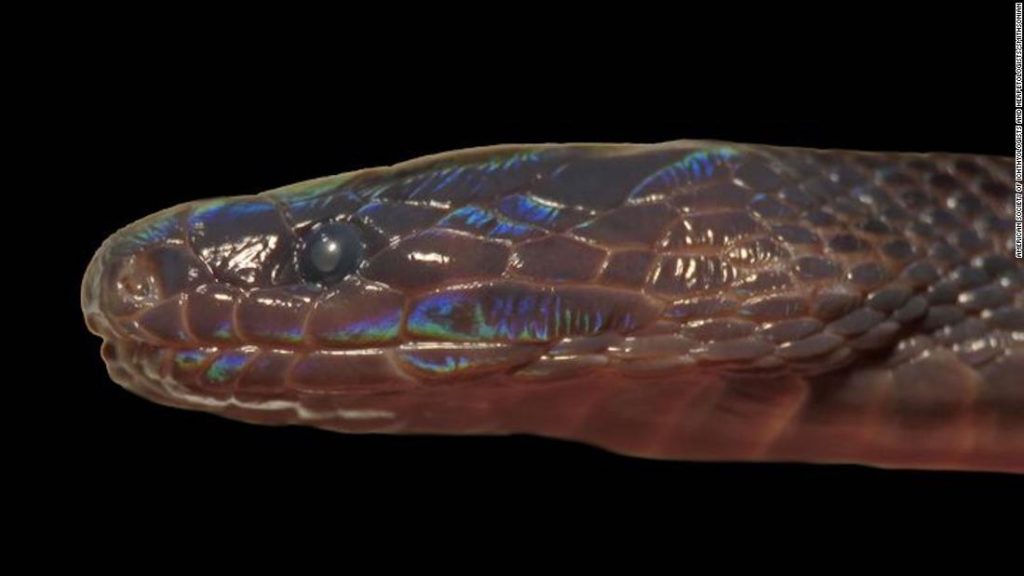It was dark and iridescent, its scales shifting through blues and greens in the light. The scales were small, ridged, and oddly patterned. The seasoned scientists had no idea what it was — and soon realized they were looking at an undiscovered species.
They spotted the snake in Vietnam’s northern Ha Giang province, which borders China. There were a few physical clues in the mystery snake’s appearance: notably, it didn’t have bright-light photoreceptors in its eyes, suggesting it burrows underground or beneath leaves. These types of snakes are particularly hard to find due to their life beneath the surface.
They also soon realized it was a species belonging to the rare genus Achalinus, also known as “odd-scaled snakes” because their scales spread out instead of overlapping like most snakes. Until now, there were only 13 known species within the genus, six of which are from Vietnam.
“In 22 years of surveying reptiles in Vietnam, I have collected only six odd-scaled snakes,” said Truong Nguyen, vice director of the Institute for Ecology and Biological Resources at the Vietnam Academy of Science and Technology, in the Smithsonian blog. “This is one of the most poorly studied groups of reptiles.”
The researchers hope this snake, which they named Achalinus zugorum in honor of the Smithsonian’s retired curator of reptiles and amphibians, can fill in some of those gaps. The Achalinus genus branched from the evolutionary tree earlier than other groups, meaning they look and behave very differently from many other snakes — and can carry vital information about snake evolution.
After their initial survey, the researchers brought the specimen back to the Smithsonian, where they sampled and sequenced the snake’s DNA. The snake will soon be sent back to Vietnam.
In the study, the research group also highlighted the dangers threatening Vietnam’s biodiversity and ecosystems, such as quarrying, deforestation, and species over-harvesting.
“It’s happening so quickly that we can’t keep up,” said Miller, the Smithsonian researcher. “Some of the species unique to this region are gone before they’re even described.”
Discoveries such as these can better inform conservation policies and management strategies, the study added — the only way to “assure the long-term survival of these enigmatic snakes in the face of existential threats.”
You may also like
-
UK coronavirus variant has been reported in 86 countries, WHO says
-
NASA technology can help save whale sharks says Australian marine biologist and ECOCEAN founder, Brad Norman
-
California Twentynine Palms: Explosives are missing from the nation’s largest Marine Corps base and an investigation is underway
-
Trump unhappy with his impeachment attorney’s performance, sources say
-
Lunar New Year 2021: Ushering in the Year of the Ox

